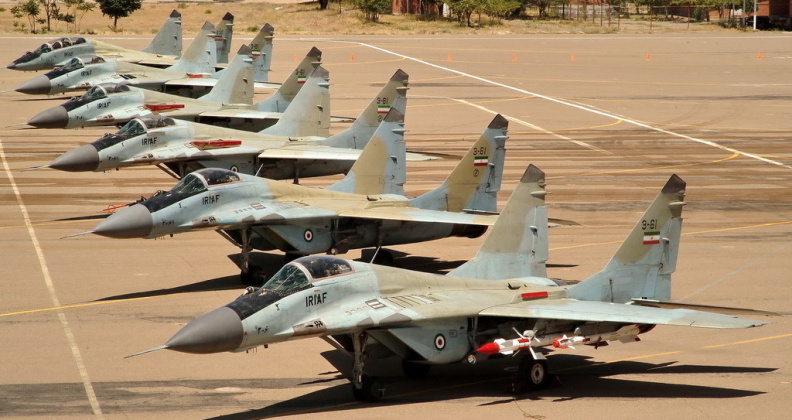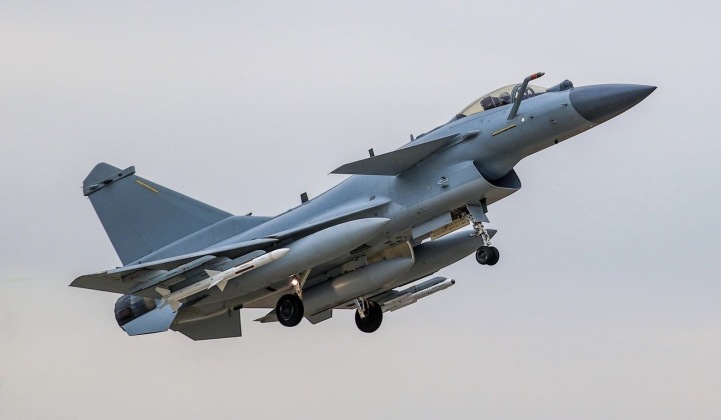From December 2021 a number of Western media outlets began reporting that Iran and Russia were on the verge of signing a $10 billion security and defence cooperation agreement which would see high end Russian hardware including 24 Su-35 fighters, two units of S-400 air defence systems, and a military satellite, transferred to the Iranian armed forces. The contract was reported to include life extension, overhaul and upgrades for Iran’s two MiG-29 squadrons and Su-24MK attack jets, and would see Russia retrain MIG-29, F-4 and F-14 pilots on the Su-35. The $10 billion cost would reportedly be paid in whole or in large part with barrels of crude oil. A number of aspects, however, have made the deal appear highly irregular and raised questions regarding the credibility of the reports. Major Iranian arms acquisitions from Russia have been reported widely in Western press since the 1990s, including at the time a contract for multiple MiG-29 squadrons, MiG-31 interceptors and even Tu-22M strategic bombers, although these have consistently amounted to nothing.

A number of factors regarding the Iranian deal appear highly irregular. Perhaps the most notable is that Iran would pay Russia, one of the world’s top oil exporters, in oil. Russia’s ability to efficiently refine Iranian oil, much less make effective use of it, remains in question, and while Russia has offered barter trade agreements in the past accepting payment in oil, particularly at a time of very high prices, remans highly unlikely. Furthermore, the $10 billion dollar figure fails to add up, with prior contracts for two dozen Su-35s and for two S-400 units costing around $2 billion each including training, shipping, spare parts, maintenance equipment, and armaments for the Su-35s. Thus major armaments in the deal would come to around $4 billion, while the satellite and the refurbishment of Soviet era jets could generously bring this up to around $5 billion. While $10 billion is a round number which looks good on headlines, it hardly corroborates with the sums quoted.

Other irregularities include the fact that, according to Forbes among other sources, Iran’s Su-35s were allegedly initially built for Egypt before Cairo cancelled its acquisition. This was despite the lack of confirmation from anything resembling an official source that Egypt had indeed terminated its contract. Forbes’ report was one of the most prominent on the arms package allegedly being planned. Beyond this Iran’s ability to afford integration of Su-35s, which have high operational costs and are the most expensive Russian fighters ever to be exported, remains questionable. The country in 2021 was reportedly struggling to finance an acquisition of Chinese J-10C fighters, which although in many ways more sophisticated than the Su-35 are much smaller and cost far less both to acquire and to operate. Iran’s closer economic and political ties to China has made acquisition of Chinese armaments more likely, and considering the current state of the Iranian Air Force and the need to replace multiple obsolete units acquisitions of smaller numbers of lighter less costly aircraft has generally been seen as more likely.

Should Iran look to Russia for fighters, it has previously shown a greater interest in the cheaper twin seat Su-30, and could also purchase the much lighter and cheaper MiG-29M or MiG-35 which have common maintenance infrastructure with the country’s Soviet supplied MiG-29 fleet. Iran has also emphasised the need for license production domestically, at the very least of spare parts, which is less likely to be made available for the Su-35. Aviaonline further indicated that Iran would likely retire its F-14 fighters after the deal, although with these being its most capable fighters and its only ones with active radar guided missiles and viable beyond visual range capabilities they would likely be the last aircraft it would retire even if foreign acquisitions were made. This is particularly true considering the significant investments made in modernising and rearming these fighters. Ultimately while reports of Iranian arms deals are likely to draw considerable readership, and could influence public opinion towards Iran and Russia, the possibility of a $10 billion Su-35 and S-400 deal in exchange for Iranian oil, and partly on Egypt’s behalf, remains extremely low.
